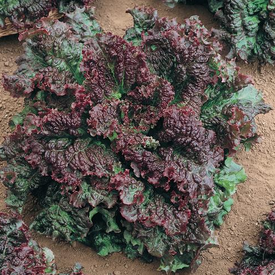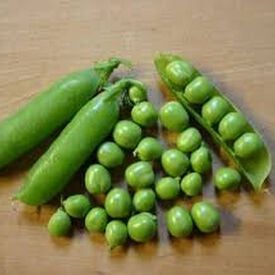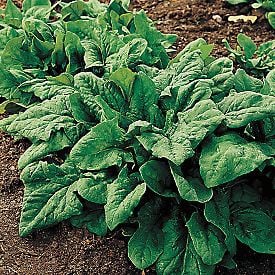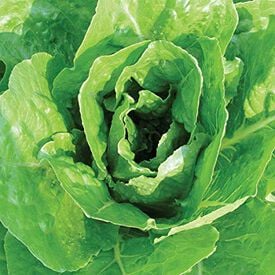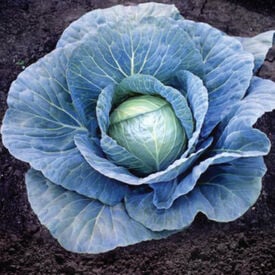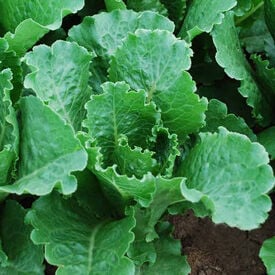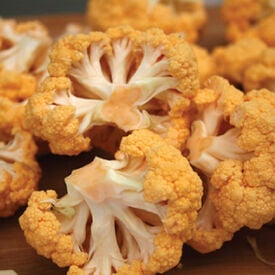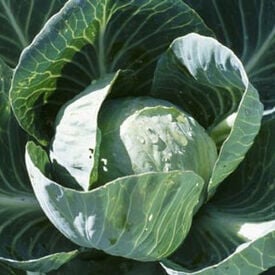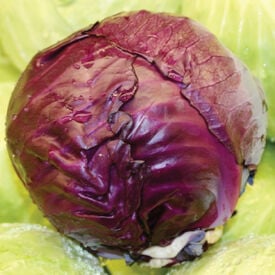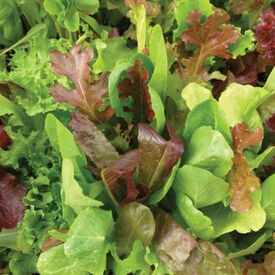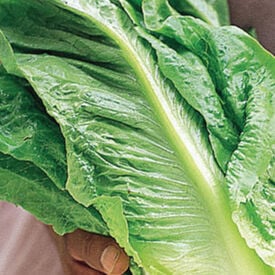The Gabriella is a loose leaf lettuce variety that has beautiful deep wine colored leaves. This variety's purple leaves are frilly and sweet -- perfect for adding a pop of color to salads! The Gabriella's leaves are delicious from mesclun size to maturity. This variety is heat resistant and slow bolting.
The Early Frosty Pea is an old heirloom that, just like its name suggests, thrives in the colder climates. This variety does great in early spring or short season plantings. The vines are cold hardy and can grow to 30." This pea plant yields 3 1/2” pods filled with 6-7 delicious medium sized peas that are excellent for fresh eating or freezing for later use.
The super sweet Renegade Spinach is simply the best all-around Spinach! This very adaptable spinach variety is early maturing with heavy yields and is easy to grow. Its dark green, rounded leaves are resistant to mildew and arise profusely on compact plants. Renegade is perfect for beginning gardeners and those that have been let down by other varieties!
The Giant Caesar Lettuce is an amazing bright green looseleaf romaine type that has a buttery sweet flavor similar to a butterhead. This variety's large leaves are easy to pick without any tearing or bruising. The Giant Caesar is heat resistant and will hold its color and flavor well.
Blue Vantage produces dense and large heads with short cores. A mid-season maturity that is ideal for fresh eating or coleslaw. Great resistance to Fusarium yellows race 1 resistant and tipburn tolerant.
The Crisp Mint Lettuce is a big romaine variety with mint green-colored leaves that will be sure to stand out in any home garden! This bold lettuce is only mint in color, not taste. However, its sweet and crunchy leaves will be a favorite addition to any salad or sandwich. Crisp Mint's heads will reach 10 inches tall making it perfect for a container garden!
The Cheddar cauliflower lives up to its name with its awesome cheddar color and great flavor! This cauliflower is a novelty, orange curd that is high in beta-carotene. A mid-size plant, domed head, and is very productive in the fall. Fun to watch grow and eat!
The Romaine Trio Blend is a mixture of three of our specialty romaine lettuces. This tri-colored blend is very popular for not only its beautiful color variation and vigorous growth, but also for its delicious taste.
The All Seasons Cabbage is a very heat resistant cabbage that is resistant to yellowing and will offer a nice flavor in any dish. This cabbage produces fine heads that are about 10-11" across and average about 11-14 pounds.
Red Express cabbage seeds produce a variety of cabbage known for its vibrant purple-red color and compact, round heads. This variety is prized for its early maturity, typically reaching harvestable size in about 60-70 days. The heads are tightly packed and dense, with crisp, tender leaves that offer a mild, sweet flavor, making it ideal for both fresh consumption in salads and slaws or for cooking. Red Express cabbage is also known for its resistance to common cabbage pests and diseases, making it a robust choice for home gardeners. Additionally, it provides a good source of vitamins A, C, and K, as well as antioxidants.
The Garden Leaf Blend is a colorful mix of our very popular lettuce varieties. This blend is a great mixture of lettuce varieties that mature at different times and have multiple colors to give your salad bowl a full pop of color! The Garden Leaf Blend includes Black Seeded Simpson, Oakleaf, Parris Island Cos, Tango, Red Romaine, Ruby and Lolla Rosso Darky
The Parris Island Cos is an heirloom romaine lettuce that is great for home and market gardens. This variety is a great lettuce commonly used for baby leaf production. Parris Island Cos is a fast maturing lettuce that makes an excellent tasting head. Its uniform upright, grey-green heads are 8-12" tall and have slightly savory leaves and are medium-slow to bolt.
